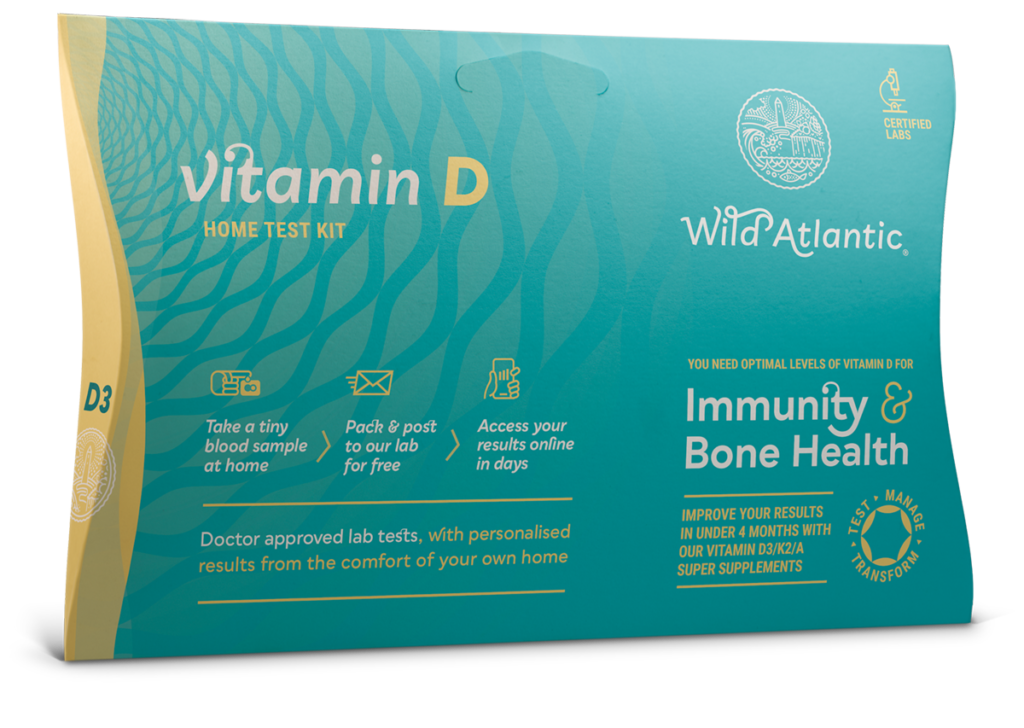Vitamin D Calculator

Don't know your current Vitamin D level?
You will need to take a Vitamin D blood test to determine your level.
Skip the Doctors' waiting rooms and order a Wild Atlantic Health Vitamin D Test. It measures the amount of this important nutrient in your blood using a simple finger prick collection method that you can do from the comfort of your home.


List Title For Vitamin Intake
List Content For Vitamin Intake

How much Vitamin D do I need to reach a desirable blood level?
This recommendation is meant to be a guide for how much supplemental Vitamin D you may need in your diet to reach your Vitamin D blood target, based on research by van Groningen et al. 2010. Up to 4,000 IU per day of supplemental Vitamin D is considered safe and is set as the upper limit in this calculator. The calculation is only valid for body weights up to 125 kg (275 lbs). Due to the seasonal effect on Vitamin D blood levels, we also suggest testing once per season to adjust your supplementation. Please consult your healthcare provider before making changes to your diet or supplementation regimen.
Your weight, D3 levels and dosage
As a rule of thumb we recommend 1000 IU / day for each 25 kg ( 55 lbs) of body weight. Taking 1000 IU/ day will raise Vitamin D levels by 12.5 nmol/L or 5 ng/mL per day.
As an example, someone weighing 68 kg (150 lbs) with a Vitamin D level of 37.5 nmol/L (15 ng/mL) and current intake of 1000 IU/day would need to increase their intake to more than 2800 IU/ day to achieve a blood level of 75 nmol/L (30 ng/mL)
Someone with the same current and target blood level and intake, but who weighs 90 kg (200 lbs) for example, would need a dose of at least 3400 IU/day.
Being overweight or older means less Vitamin D in the bloodstream and people should dose accordingly.

How Can You Find Out Your Vitamin D level?
You will need to take a Vitamin D test to find out your level in order to use the Vitamin D Calculator.
Vitamin D Test
The Vitamin D Test measures the amount of this important nutrient in your blood using a simple finger prick collection method that you can do at home.


What kind of Vitamin D should I take?
Vitamin D3 is produced when the body is exposed to sunlight (ultraviolet B radiation sunlight). Our bodies are amazingly efficient when it comes to producing vitamin D3. Vitamin D3 is typically better absorbed than Vitamin D2 supplements; Vitamin D2 is a vegetarian source.
Foods with high levels of Vitamin D include salmon, rainbow trout, herring, sardines, liver, eggs, whole milk and mushrooms like portabella, maitakes and white buttons.
Now what?
Use this information to make changes to your lifestyle, such as supplementing, increasing sun exposure, or making changes to your diet.
Ensure your Vitamin D level has improved and is maintained by re-testing at least every 6 months
Join our Health Movement
We’ll surprise you with science-backed wellness content, freshly delivered.
Subscribe to our Wildly Healthy newsletter and get content and offers you won’t find anywhere else


















